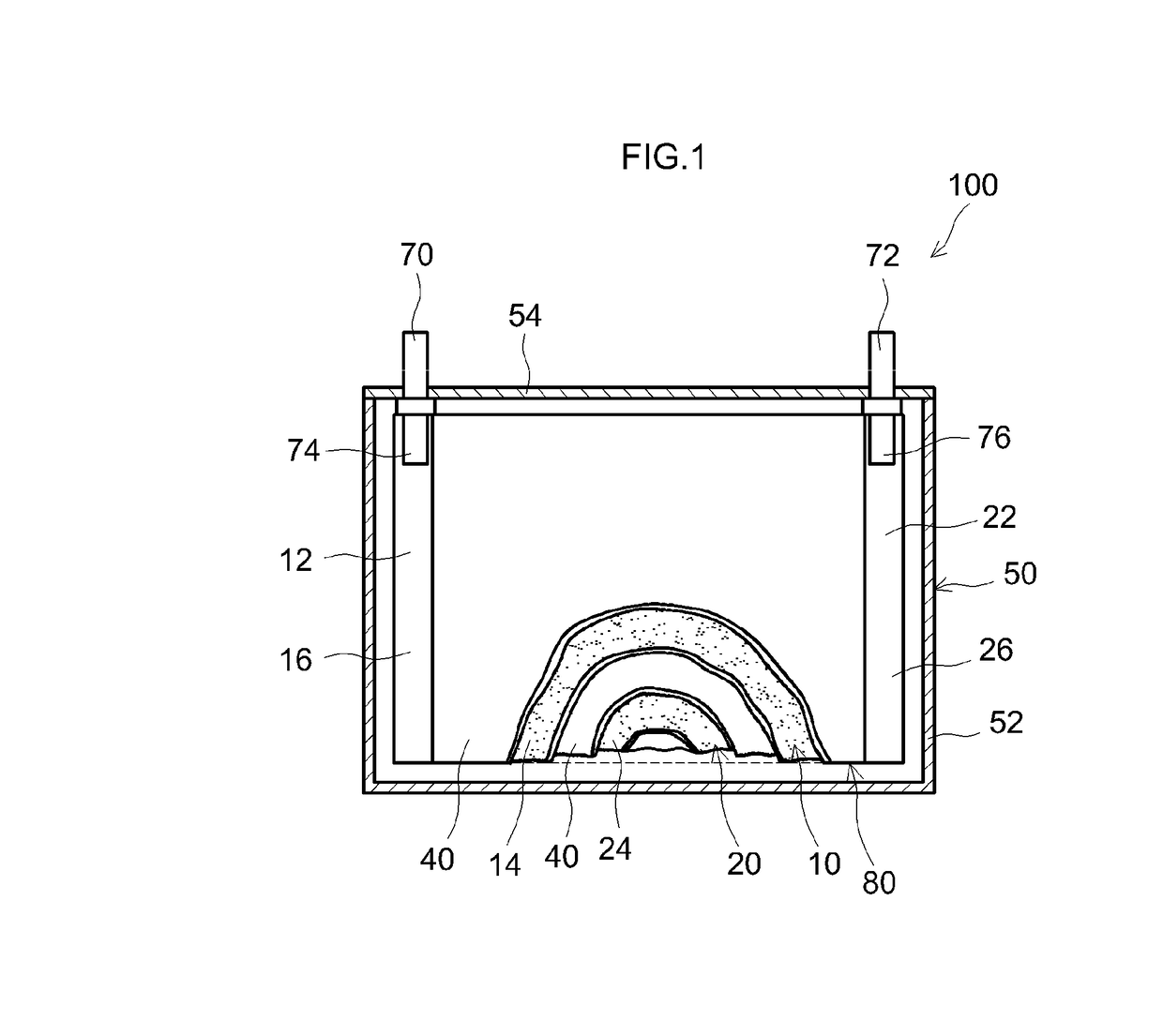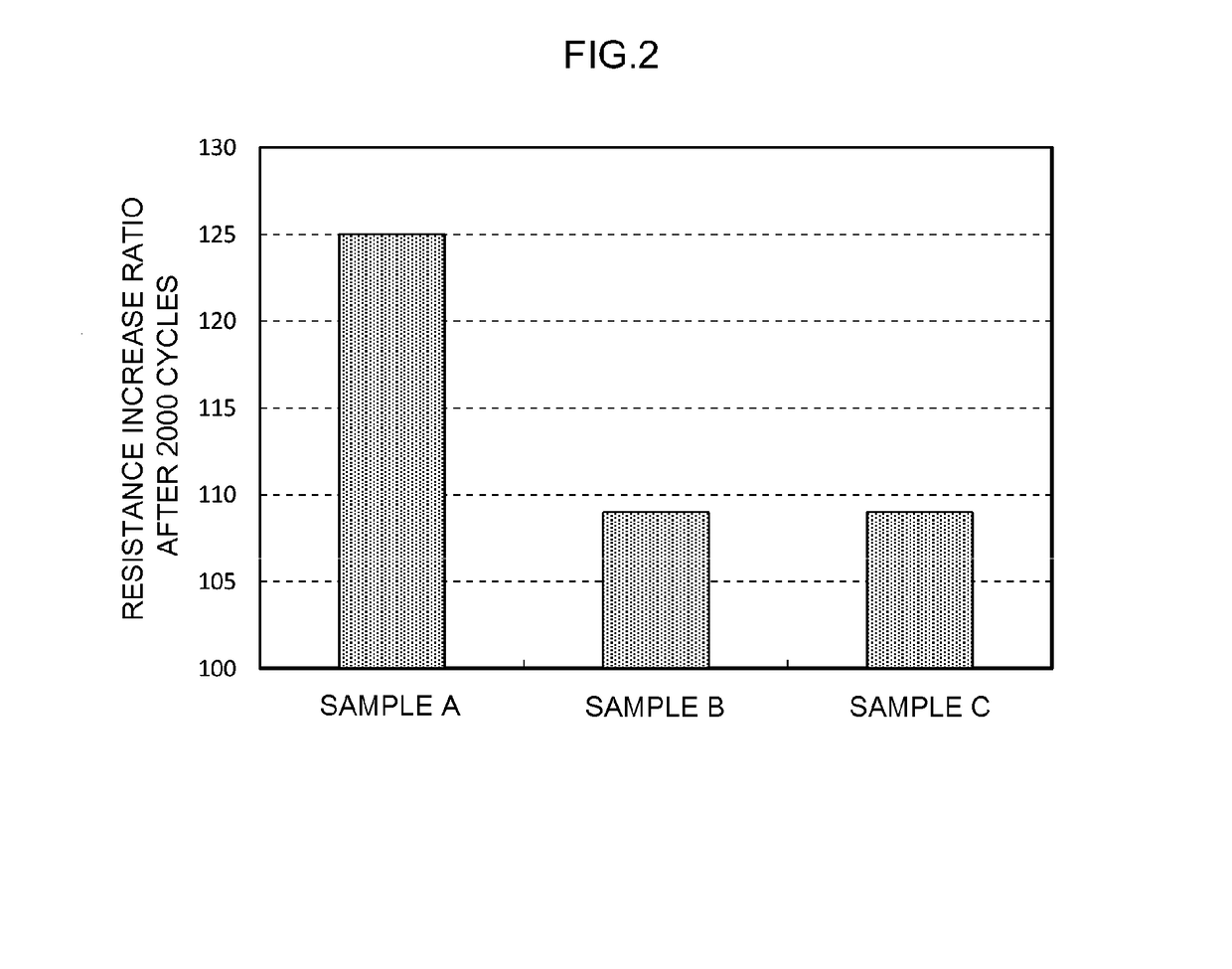Nonaqueous electrolytic solution secondary battery
a technology of nonaqueous electrolysis and secondary batteries, which is applied in the direction of batteries, sustainable manufacturing/processing, cell components, etc., can solve the problems of reducing battery capacity and reducing durability (cycle characteristic)
- Summary
- Abstract
- Description
- Claims
- Application Information
AI Technical Summary
Benefits of technology
Problems solved by technology
Method used
Image
Examples
Embodiment Construction
[0028]The desired embodiment of a lithium ion secondary battery which is a typical example of the nonaqueous electrolytic solution secondary battery disclosed herein will be explained below. Features other than those specifically described in the present specification, but necessary for implementing the present teaching can be considered as design matters for a person skilled in the art that are based on the conventional techniques in the pertinent field. A battery to which the present teaching can be applied is not limited to the lithium ion secondary battery of the configuration explained as an embodiment herein, provided that in the nonaqueous electrolytic solution secondary battery disclosed herein, as will be explained hereinbelow in detail, a negative electrode active material and carbon black are included in a negative electrode active material layer and a coating film made of a lithium transition metal composite oxide having lithium ion conductivity is formed on at least par...
PUM
| Property | Measurement | Unit |
|---|---|---|
| particle diameter | aaaaa | aaaaa |
| average particle diameter | aaaaa | aaaaa |
| particle diameter | aaaaa | aaaaa |
Abstract
Description
Claims
Application Information
 Login to View More
Login to View More - R&D
- Intellectual Property
- Life Sciences
- Materials
- Tech Scout
- Unparalleled Data Quality
- Higher Quality Content
- 60% Fewer Hallucinations
Browse by: Latest US Patents, China's latest patents, Technical Efficacy Thesaurus, Application Domain, Technology Topic, Popular Technical Reports.
© 2025 PatSnap. All rights reserved.Legal|Privacy policy|Modern Slavery Act Transparency Statement|Sitemap|About US| Contact US: help@patsnap.com



